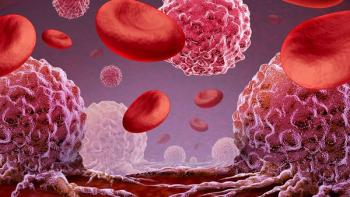
Polycythemia Vera Treatments Underused Despite Recommendation
Two treatments that may help patients with a potentially deadly blood cancer live longer and prevent the incidence of thrombosis (blood clots) are being underused.
Two treatments that may help patients with a potentially deadly blood cancer live longer and prevent the incidence of thrombosis (blood clots) are being underused, according to study findings published in Blood Advances.
Polycythemia vera (PV), a type of myeloproliferative neoplasm that forces bone marrow to produce too many red blood cells, should be treated with therapeutic phlebotomy, a procedure that removes blood from a person's body with the goal of reducing iron overload, and cytoreductive therapy with the chemotherapy medication hydroxyurea based on current recommended guidelines from the National Comprehensive Cancer Network (NCCN).
However, a study conducted by researchers at Yale Cancer Center found that both treatments are not often used in older patients with PV. Using the National Cancer Institute-developed Surveillance, Epidemiology, and End Results—Medicare database, researchers examined 820 older adults — median age was 77 years — who received a diagnosis of PV from 2007 to 2013. More than half (57 percent) were women and 91.2 percent were white.
They discovered that 41.1 percent of patients received phlebotomy and hydroxyurea, 23 percent underwent phlebotomy only, 19.6 percent received hydroxyurea only and 16.3 percent received neither.
After a median follow-up of 2.83 years, 37.2 percent (305) of patients had died. Patients treated with phlebotomy had a 35 percent reduction in death and a 48 percent reduction in the risk of developing blood clots, according to a Yale Cancer Center press release. In addition, researchers found that every 10 percent increase in the proportion of days patients used hydroxyurea led to an 8 percent lower risk of death and blood clots.
“The results of the study add to the evidence behind current NCCN and
Blood clotting events were observed in 36.1 percent of patients. Among patients who received phlebotomy, 29.3 percent developed blood clotting events compared with 46 percent who did not undergo the procedure. Blood clotting events occurred in 27.6 percent of patients who received hydroxyurea compared with 45.4 percent who didn’t.
An increased risk of death was associated with older age, being male, having at least one comorbidity and not receiving the flu vaccination. Having two or more comorbidities was associated with more blood clotting events after diagnosis.
“We believe that timely introduction of (





